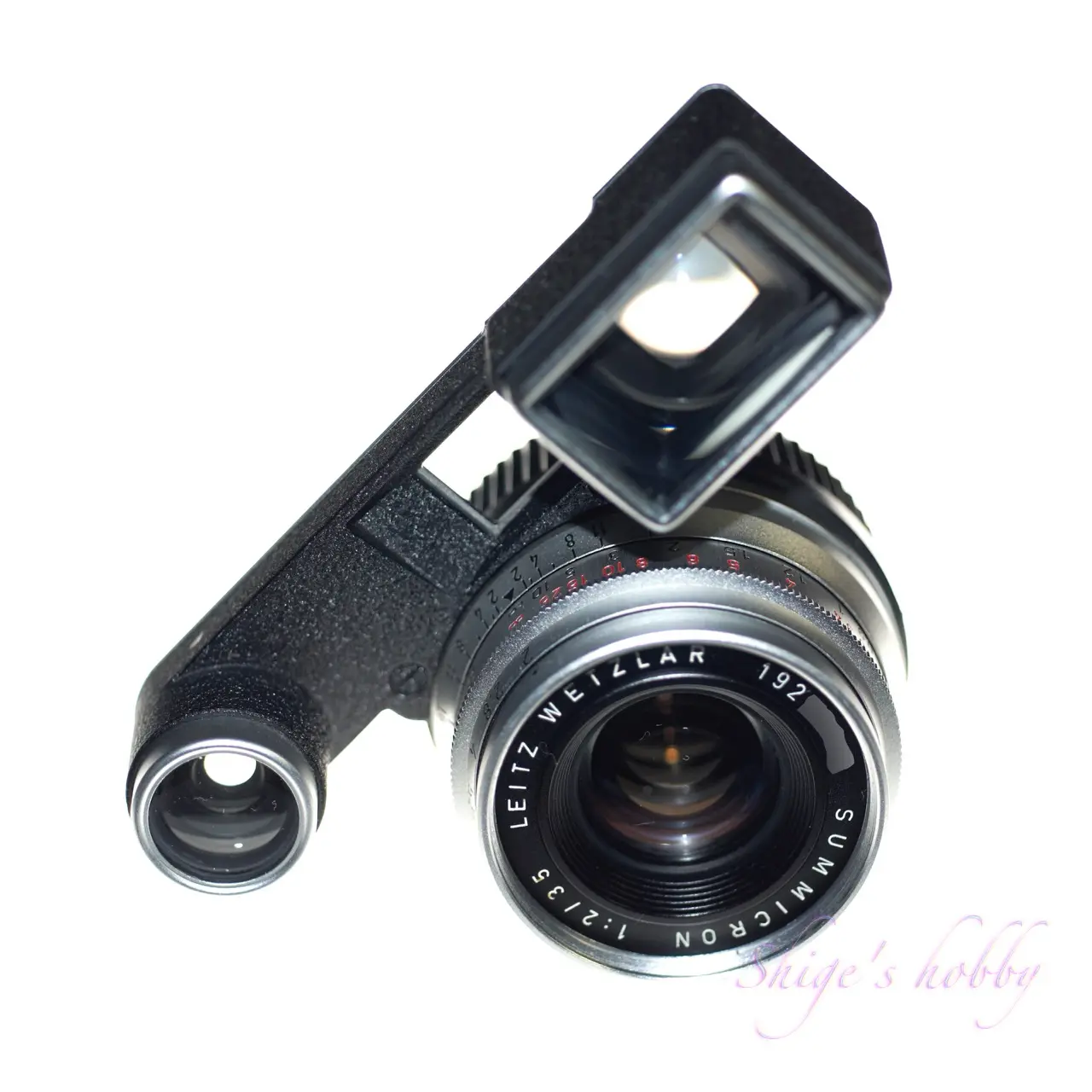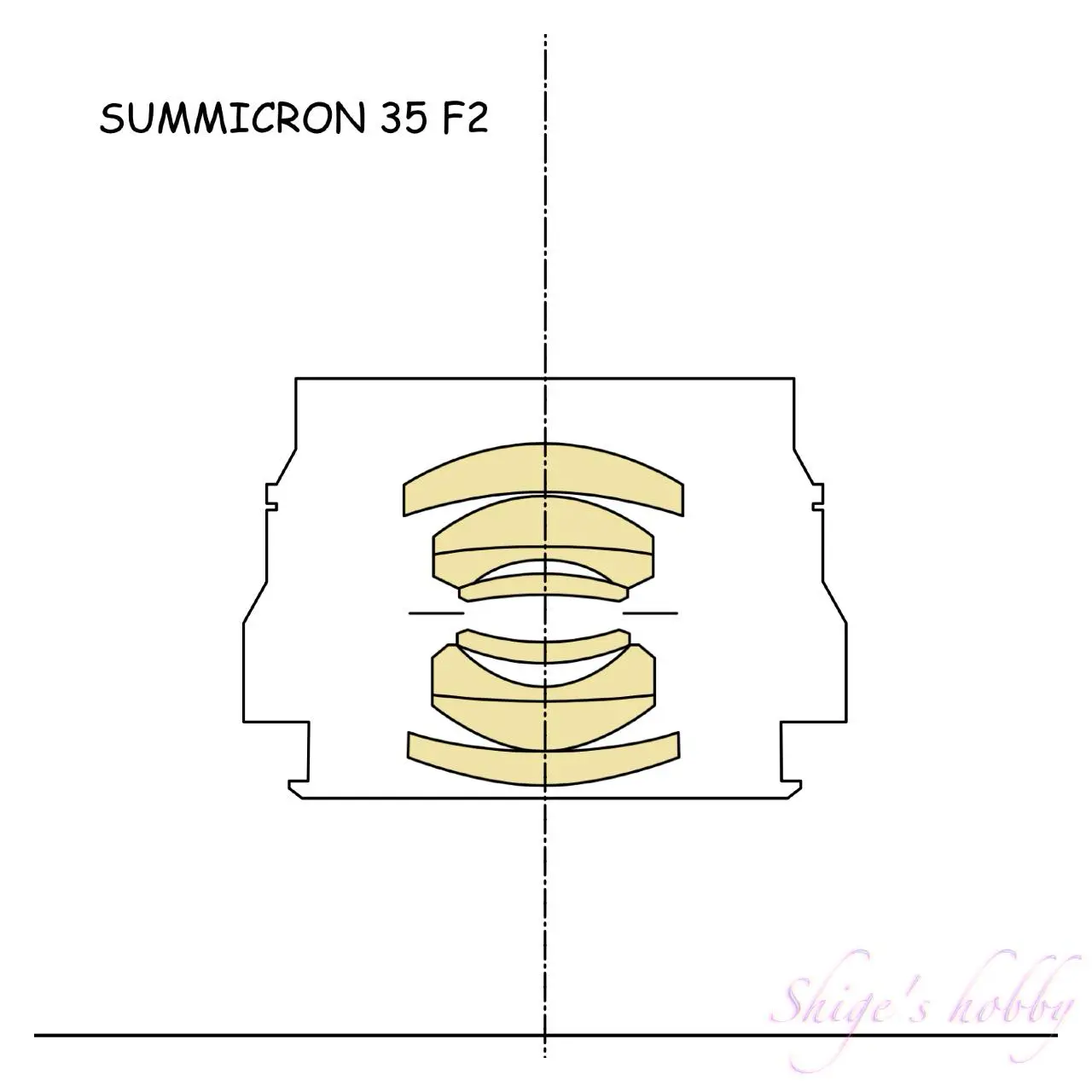SUMMICRON 35mm F2 with Goggles

A review and photo examples of the LEICA SUMMICRON M 35mm F2 with goggles.
Table of contents

Gallery
- The sample photos were taken with the LEICA M10
Review


1.Overview
The SUMMICRON 35mm F2 with goggles is a lens made for the Leica M3, and is equipped with goggles that convert the M3’s 50mm viewfinder to 35mm.
Therefore, when attached to an M-type Leica, the viewfinder display frame is designed to be 50mm, and the 50mm frame is displayed when the lens is attached to M-type Leica bodies from the M3 onwards.
The lens with goggles can be attached to digital M-type Leica bodies such as the LEICA M8, LEICA M8.2, LEICA M9, LEICA M typ240, LEICA M10, and LEICA M11 without any problems.
The minimum shooting distance with the goggles is 0.65m, which is 5cm closer than the 0.7m without glasses.
The lens hood is the same as the first Summicron, so the hood name: IROOA can be used. There is a stopper, so the hood cannot be attached backwards, just like with the Summicron without goggles.

2.Usability
The image quality of the SUMMICRON 35mm F2 with goggles is that of an eight-element lens, and it is soft when the aperture is wide open, but not too hard when the aperture is narrowed down, giving it an exquisite feel.
Because it is an old lens, ghosts and flares can occur when shooting in backlight without a hood.
When it comes to backlight protection, the SUMMICRON IROOA is the one. There are many types available, from genuine to compatible.
The light blocking properties of the compatible products are a perfect copy of the shape, so there is no problem. I have only purchased a few, but I have never encountered a poor quality IROOA compatible product. It cannot be attached backwards because it has glasses and a stopper.
The appearance of the lens with goggles is the same as that of a normal eight-element lens, in terms of the paint and the feel of the stopper, and the only difference is that it looks more ostentatious because it is a pair of glasses.
The crepe paint on the glasses part is beautifully finished, and the paint film seems to be durable, and it has not peeled off despite aging since it was sold and frequent removal from the camera bag since I obtained it.
3.Summary
In conclusion, to sum up the SUMMICRON 35mm F2 with glasses, it is a lens that allows you to experience the legendary M-type 8-element lens at an affordable price.
It is compatible with all film M-type Leicas and digital M-type Leicas, so you can enjoy shooting regardless of the body you own.
Since the 2020s, the price of Leica lenses in general has been rising, and this lens has also risen in price.
Specification and Competitor
Here we compare an 8-element Summicron with an aspherical Summicron. We can clearly see that the lens construction of the modified Gaussian-type 8-element lens and the latest aspherical Summicron design are completely different.
The “old” notation in the diagram of the aspheric Summicron is used because the shape of the lens barrel is a trace of an older model with a hook-type hood.
Also, when we look at the lens construction diagrams of the 6-element and 7-element lenses, we can see that these two were built with an emphasis on reducing costs compared to the 8-element lens.


A brief description of each Summicron is given below.
- The 6-element lens has always been cheaper than the Summicron 35mm, probably because it is less popular despite the small number of lenses.
- The 7-element lens is relatively expensive, with 50,000 units produced, but it maintains a price similar to the next aspherical type.
- The aspherical type is still a current lens as of 2024, and has a long life and is produced in large numbers. As Leica’s retail price has risen, the used price has also risen accordingly.
- The apotype is a lens from a completely different world, costing over 1 million yen, and is out of reach for poor Leica users.
| Items | 8elements | 6elements | 7elements | Asferical-type | APO-type |
| Focal length | 3.5(cm) | 35(mm) | 35(mm) | 35(mm) | 35(mm) |
| Max aperture | 2 | 2 | 2 | 2 | 2 |
| Min aperture | 16 | 16 | 16 | 16 | 16 |
| Aperture blade | 10 | 10 | 10 | 10 | 11 |
| Lens Construction | 8 elements in 6 groups | 6 elements in 4 groups | 7 elements in 5 groups | 7 elements in 5 groups | 10 elements in 5 groups |
| Min distance(m) | 0.7 goggles 0.65 | 0.7 | 0.7 | 0.7 | 0.3 |
| Lens length(mm) | 29 | 33 | 26 | 34.5 | 40.9 |
| Lens Max diameter(mm) | 51 | 51 | 52 | 53 | 53 |
| Filter Size | E39 | E39 | E39 | E39 | E39 |
| Lens hood | IROOA | 12504 12585 | 12524 12526 12504 12585 | 12524 12526 12504 12585 | 専用ねじ込み |
| Lens mount | M | M | M | M | M |
| Weight(g) | 195 * | 170 * | 160 * | 255 * | 320 ** |
| Release date | 1958~ * | 1696〜 * | 1979〜 * | 1996〜 * | 2021〜 |
| Production numbers | 38,000 units * | 28,000 units * | 50,000 units * | 110,000 units * | Unknown |
**:No official weight figures have been released.
Reference links
- Summicron 35mm f2 description page by LEICA Wiki
- Summaron 35mm f2.8 description page by LEICA Wiki
- Summaron 35mm f3.5 description page by LEICA Wiki
- Leica APO-Summicron-M f2/35mm ASPH. official page
Update history
- 2024.12.16
Affiliate links
- Please see the disclaimer regarding advertising here.
- Italicized links in the text are advertisement links that take you to other sites.

Leave a Reply